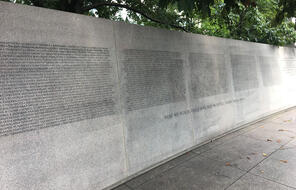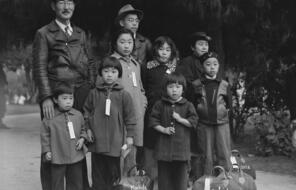White Paper, Red Paper
In 1969, Jean Chrétien, then Indian Affairs and Northern Development minister and later prime minister (1993–2003), presented a policy statement called the Statement of the Government of Canada on Indian Policy. It would later become known as the White Paper and would serve as the backbone of Prime Minister Pierre Trudeau’s “Just Society” policy. It highlighted the “right of Indian people to full and equal participation in the cultural, social, economic and political life of Canada” and insisted that “to argue against this right is to argue for discrimination, isolation and separation.” The document stated that “the government believes that services should be available on an equitable basis. . . . Services ought not to flow from separate agencies established to serve particular groups, especially not to groups that are identified ethnically. . . . All Indians should have access to all programs and services of all levels of government equally with other Canadians. . . . ” 1 This idea may sound appealing to some, but to many Indigenous people, it was not. Activists, scholars, and community leaders read it as yet another campaign to deny their rights to assert their “group identity and autonomy.” It was, in the eyes of many critics, a thinly veiled attempt to get rid of the treaties, the nation-to-nation agreements. A reporter for the Globe and Mail summarized the dilemma:
For most Canadians, that seemed only fitting after a decade marked by immense struggles worldwide against segregation and for equality. But it also meant that Indians would lose their centuries-long unique status. Treaties would be scrapped. Indian lands, long owned collectively under the trusteeship of the Crown, would be privatized and distributed to Indians individually. The Indian Affairs bureaucracy would shut down. 2
For the Indigenous Peoples in Canada, this was just another attempt to disperse them as nations and force them to assimilate into Euro-Canadian society. They believed that if it were carried out, their aspirations of governing their own affairs would be shattered forever.
Part of a global trend seeking to claim rights for women, blacks, and colonized nations, a new generation of Indigenous activists came of age in the 1960s. These activists rejected the ideas behind the new policy and began a campaign to force the Canadian government to honour its past agreements with the Indigenous nations. For many, Trudeau’s Just Society proposal was yet another attempt to assimilate the Indigenous Peoples of Canada. Their outrage would eventually force the Trudeau government to abandon the policy. One of this new generation’s activists was Harold Cardinal, who was then president of the Indian Association of Alberta. In his mid-twenties, Cardinal rose to prominence among First Nations, serving multiple times as leader of the Indian Association of Alberta. In 1970, in response to the idea of this “just society,” Cardinal wrote a fiery retort—a book called Unjust Society, later known as the Red Paper—which opened with these words:
The history of Canada’s Indians is a shameful chronicle of the white man’s disinterest, his deliberate trampling of Indian rights and his repeated betrayal of our trust. Generations of Indians have grown up behind a buckskin curtain of indifference, ignorance and, all too often, plain bigotry. Now, at a time when our fellow Canadians consider the promise of the Just Society, once more the Indians of Canada are betrayed by a programme which offers nothing better than cultural genocide .
The new Indian policy promulgated by Prime Minister Pierre Elliott Trudeau’s government, under the auspices of the Honourable Jean Chrétien, minister of Indian Affairs and Northern Development, and Deputy Minister John A. MacDonald, and presented in June 1969 is a thinly disguised programme of extermination through assimilation
. For the Indian to survive, says the government in effect, he must become a good little brown white man. The Americans to the south of us used to have a saying: “The only good Indian is a dead Indian.” The MacDonald-Chrétien doctrine would amend this but slightly to, “The only good Indian is a non-Indian.”
. . . It sometimes seems to Indians that Canada shows more interest in preserving its rare whooping cranes than its Indians. And Canada, the Indian notes, does not ask its cranes to become Canada geese. It just wants to preserve them as whooping cranes. Indians hold no grudge against the big, beautiful, nearly extinct birds, but we would like to know how they managed their deal. Whooping cranes can remain whooping cranes, but Indians are to become brown white men. The contrast in the situation is an insult to our people. Indians have aspirations, hopes and dreams, but becoming white men is not one of them. 3
In response to the public outrage this and other publications inspired, the government shelved the White Paper policy. Moreover, in the next five years, several court cases and agreements reaffirmed the rights of Indigenous people to their lands. 4
Connection Questions
- What was the main idea behind the White Paper? Why did Harold Cardinal reject it? On what grounds?
- What were the key issues, according to Cardinal, that could guarantee Indigenous recovery? How different was his vision from the government policies of assimilation (and individual rights)?
- According to Cardinal, what was the basis for Indigenous demands for justice? How does Indigenous sovereignty or autonomy conflict with the vision of the White Paper? Do you think that Indigenous autonomy can be accommodated inside the Canadian political system? How?
- An upstander is someone who stands up to injustice and fights for what he or she believes in and to create change. In what ways is Harold Cardinal an upstander?
- IndianIndian: When the first European explorers landed in the Americas in 1492 with Christopher Columbus, they referred to the entire Indigenous population on the continent as “Indians” because they believed that they had arrived in India. The term came into widespread use among the settlers, and it lumped together entire local populations, disregarding their extraordinary diversity. Ultimately, the name Indian served to differentiate between Indigenous Peoples and the settlers, who referred to themselves as Europeans, whites, and, finally, Canadians.
- 1Statement of the Government of Canada on Indian Policy (The White Paper, 1969), Aboriginal Affairs and Northern Development website, accessed September 11, 2014.
- 2William Johnson, “Indians and the Just Society,” The Globe and Mail, June 24, 2009, accessed March 3, 2015.
- genocidegenocide: In 1944, Raphael Lemkin coined the term genocide to describe the intentional and systematic destruction of a racial, political, or cultural group. Genocide stems from the Greek word genos, which means “race,” and cide, which means “to destroy.” It was legally defined in the Convention on the Prevention and Punishment of the Crime of Genocide of 1948 (the Genocide Convention). When the Canadian government selectively ratified the Genocide Convention in 1952, it excluded crucial elements of the convention. Many Indigenous leaders, activists, and politicians have publicly called on the Canadian government to recognize the Indian Residential Schools system as genocide.
- assimilationassimilation: This term refers to the process whereby one group or individual’s culture is absorbed into another, creating one single cultural entity, giving up distinct group or individual identity. Believing that Indigenous cultures were inferior, the Canadian government, since the middle of the nineteenth century, put forth a series of policies to assimilate the Indigenous Peoples into settler Canadian society.
- 3Harold Cardinal, The Unjust Society (Toronto: Douglas and McIntyre, Ltd., 1999), 1.
- 4Robert M. Bone, “Colonialism to Post-Colonialism in Canada’s Western Interior: The Case of the Lac La Ronge Indian Band,” Historical Geography 30 (2002), 61–64.
How to Cite This Reading
Facing History & Ourselves, “White Paper, Red Paper”, last updated September 20, 2019.
















